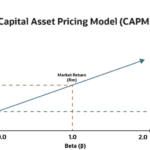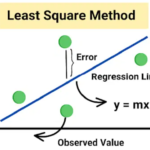
By ATGL
Updated January 29, 2025
In investing, risk comes in many forms, but not all risks impact the market equally. What is unsystematic risk? It refers to company- or industry-specific uncertainties that can affect stock performance independently of broader economic conditions. Unlike systematic risk, which cannot be avoided, unsystematic risk can be mitigated through diversification. However, many retail investors underestimate its impact, assuming that strong financials or market trends alone can safeguard their investments.
Understanding Unsystematic Risk
Unsystematic risk, also known as specific or diversifiable risk, arises from internal business operations, financial decisions, or industry-specific conditions rather than macroeconomic forces. Unlike systematic risk, which stems from factors such as interest rates, inflation, or geopolitical events, unsystematic risk is unique to individual companies or sectors.
Why Does Unsystematic Risk Matter for Investors?
Even companies with strong growth potential can be affected by unsystematic risk. A business might struggle due to leadership changes, supply chain disruptions, or shifting consumer preferences. If you fail to anticipate these factors, you may see unexpected volatility in your portfolios.
Systematic Risk vs. Unsystematic Risk: What Are the Differences?
Understanding systematic risk vs. unsystematic risk is important for building a well-balanced portfolio.
- Systematic Risk: Affects the entire market and cannot be avoided. Examples include recessions, interest rate hikes, and geopolitical instability. You can mitigate its impact by adjusting asset allocations, but you cannot eliminate it entirely.
- Unsystematic Risk: Limited to a specific company or industry and can be reduced through diversification. Since it is not tied to broader market movements, if you spread your capital across multiple sectors, you’re less exposed to this type of risk.
Investors often assume that holding multiple stocks automatically eliminates risk. However, true diversification involves spreading investments across different asset classes and industries. Holding multiple stocks within the same sector — such as technology or energy — doesn’t provide adequate protection from industry-specific downturns.
Spreading investments across multiple sectors and asset classes reduces dependency on any single stock or industry. When you follow a dividend growth strategy, you can further mitigate risk by focusing on companies with strong cash flows and a history of consistent dividend increases.
Main Types of Unsystematic Risk
1. Business Risk
Business risk arises when a company’s operations or strategy lead to lower-than-expected profits. This can happen if management makes poor decisions, competition increases, or consumer preferences change.
For instance, imagine an established clothing retailer that fails to adapt to online shopping trends. While competitors launch digital storefronts and offer seamless delivery options, this company sticks to its traditional in-store model. As a result, its sales decline, and investors holding its stock experience losses, even though the overall market is performing well.
2. Financial Risk
Financial risk is related to how a company manages its debt and financial obligations. Businesses that take on too much debt may struggle to make payments, especially if interest rates rise or revenue declines.
Consider a fast-growing technology firm that finances its expansion by taking on large loans. If demand for its products unexpectedly slows, the company might have difficulty generating enough cash flow to cover its debt. Investors in this company could see share prices drop as financial instability raises concerns about the firm’s long-term viability.
3. Operational Risk
Operational risk stems from internal failures, such as supply chain disruptions, cyberattacks, or production issues.
Imagine a manufacturing company that relies on a single overseas supplier for a key component. If that supplier experiences production delays, the manufacturer may struggle to fulfill orders, leading to revenue losses and a decline in stock value. Investors who were unaware of the company’s reliance on a single supplier might be caught off guard by the sudden downturn.
4. Regulatory and Legal Risk
Regulatory and legal risk arises when changes in laws or legal challenges affect a company’s ability to operate. Businesses in highly regulated industries, such as healthcare or finance, face the greatest exposure to this type of risk.
For example, a pharmaceutical company developing a new medication may face unexpected delays due to additional regulatory approvals. If approval takes longer than anticipated — or if new regulations impose stricter safety requirements — the company’s stock could drop significantly despite strong demand for the product.
5. Strategic Risk
Strategic risk occurs when a company makes poor long-term business decisions. This could include entering an unprofitable market, failing to invest in innovation or misallocating resources.
Consider a smartphone manufacturer that invests heavily in developing a new product line, expecting it to revolutionize the industry. However, the product fails to attract customers due to outdated technology and high pricing. As a result, the company loses market share, and its stock value declines, impacting investors who had high expectations for the launch.
How To Mitigate Unsystematic Risk
You can take proactive steps to minimize exposure to unsystematic risk:
- Diversification: Spreading investments across multiple sectors and asset classes reduces dependency on any single stock or industry. Tools like the Capital Asset Pricing Model (CAPM) emphasize the importance of diversification by identifying the portion of risk specific to individual stocks, which can be minimized through a well-constructed portfolio.
- Thorough Research: Evaluating financial statements, leadership quality, and industry trends helps identify potential red flags.
- Hedging Strategies: Using options, futures, and other financial instruments provides downside protection against adverse company-specific events.
- Portfolio Rebalancing: Regularly reviewing and adjusting asset allocations ensures continued alignment with financial goals and risk tolerance.
You should not only diversify you portfolios but also consider alternative assets such as bonds, real estate, and commodities. This broader diversification enhances resilience against both systematic and unsystematic risks.
FAQs About Unsystematic Risk
Is Unsystematic Risk Controllable or Not?
Yes, investors can manage unsystematic risk through diversification, research, and strategic asset allocation. Unlike systematic risk, which affects all investments, unsystematic risk can be mitigated with a well-structured portfolio.
Is Inflation an Example of Unsystematic Risk?
No, inflation is a macroeconomic factor that impacts the entire economy, making it a systematic risk rather than an unsystematic one.
How Do You Measure Unsystematic Risk?
You can assess unsystematic risk using financial metrics such as:
- Standard deviation: Measures stock price volatility.
- Company financial health indicators: Examining debt ratios, cash flow stability, and earnings growth.
- Industry-specific risk analyses: Identifying sector-specific challenges.
What Are Examples of Unsystematic Risks?
Examples include:
- A company’s CEO resigning unexpectedly.
- A major cybersecurity breach affecting operations.
- A new competitor disrupting an industry with innovative technology.
Ensure Secure and Profitable Investments With Above the Green Line
At Above the Green Line, we specialize in helping investors navigate market uncertainties by identifying high-potential opportunities and minimizing risk exposure. Our proprietary investment models leverage key financial metrics to optimize portfolio performance. Become a member today to access expert insights and tools designed to enhance your investment strategy.






